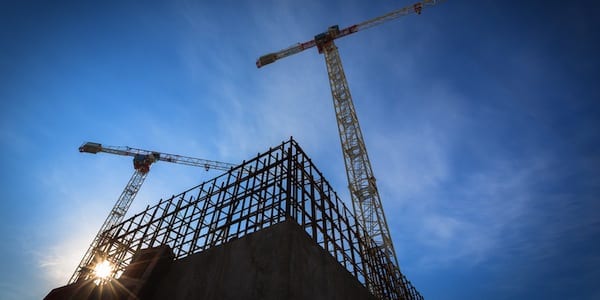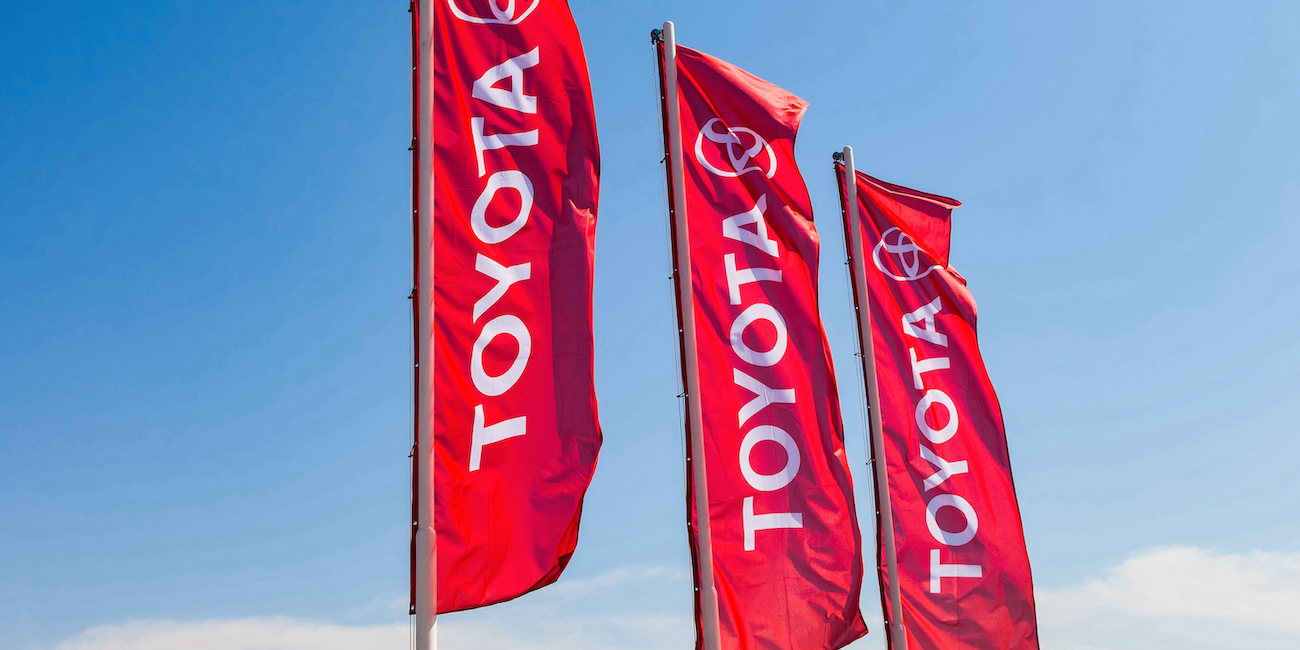
Quality by kaikaku
CASE STUDY – This Turkish producer of sanitaryware has boosted its quality so dramatically it’s now a player in the German market. It did so by bringing drastic change to its production system.
Words: Tayfun Gökşen, Plant Manager and Director of Operational Excellence, VitrA – Istanbul, Turkey
Our history stretches back to 1942, when a group of eight people worked tirelessly out of a small workshop in Istanbul to supply Turkey with earthenware products. But it was really after the Second World War that the company had its big break, as demand for ceramic sanitaryware increased. Our first factory opened in 1958.
Over the years, VitrA (which is part of the Eczacıbaşı group of companies) has expanded its product range to include everything you might need in a bathroom, from tap fittings to bathtubs, cabinets to tiles. We started to produce bathroom furniture after the year 2000, as these products became more and more popular, but it was painfully clear we didn’t know the business well enough: in 2007-2008, we started to export to Germany, but our quality wasn’t good enough.
To tap into this growing market, we needed know-how – which in 2009 led us to acquire a German company with a lot of expertise in this sector. Today, we are thriving: we sell our products through a network of over 2,000 sales points (we do a lot of work with DIY stores and big projects) and we export to 70 countries. And Germany is one of our biggest markets.
We were in a good place, in the sense we didn’t need to find customers. Our problem was to meet their demands for high quality and fast delivery. The only way for us to do this was to transform our factory to become more efficient and to be able to adapt to changes in the market. That’s how we got to know lean thinking.
DRASTIC CHANGE
They say you need a crisis to establish a lean culture. At the end of the 2000s, we had two factories (one for bathroom products and one for kitchen products) and they were both losing money. In 2010 we decided to combine them, and over the following two years we doubled production, but our gross margin remained very low. Additionally, our lead-times were long and typically unreliable, there were quality issues with our products (often resulting in customer complaints) and we had a lot of stock. Everybody was tired of everything back then! Management was unhappy, operators were unhappy, and our customers were unhappy.
In 2013, our then general manager – now the CEO – traveled to Japan with Lean Institute Turkey (LIT) and first heard about Toyota’s alternative management philosophy. Just a few months later, in 2014, we were hosting our kick-off meeting. Our lean transformation had begun (we have been supported throughout it by senior lean coach from LIT, Cevdet Özdoğan).
It was difficult to understand where to start and that’s why we decided to create a value stream map. As part of that exercise, we discussed material flow, our IT infrastructure, the role of teams in production and material planning, and the implementation of lean. After that, we organized a 10-day training course for team leaders together with the lean institute.
The main challenge we had with training was that production had to continue in the meantime: team leaders were sent to the 10-day training, but for operators this wasn’t an option. Blue-collar workers were given a one-hour introductory course, whereas for training on specific tools – like 5S – we typically stop production for half a day at the end of the year (we also use group games developed by the lean institute). What we truly rely on to develop our people is on-the-job training.
The most important decision resulting from those early steps was to move to smaller batches in production, from weekly to daily planning. Even a one-day batch then turned out to be too hard to control, so we moved to half-day (4-hour) batches.
Another problem we were experiencing was the huge variation in the types of orders we received, and the corresponding expectations with regards to delivery times. Every customer wants something different, and at different times: products we provide to large projects, for instance, are typically ordered three months before delivery, whereas DIY stores often need products in a matter of days. To mitigate the negative effects this was having on our production schedule, we went to the Sales and Marketing Department and, together with them, we came up with a system to categorize orders and establish priorities. Once we agreed on this system internally, we reached out to our customers.
At this stage, capacity surfaced as another issue for us. We had the right date for each order now, but we didn’t always have the capacity. We didn’t want to touch small orders (retail and customer ones), so we divided bigger ones in smaller pieces and began to manage them according to capacity. When capacity is not enough, we go to the customer and explain the situation – not ideal, but at least we have visibility over the situation and can discuss openly with our clients.
By that point, we had worked on material planning (introducing safety stock, a Kanban system and just-in-time) and on production improvements. However, all the changes had resulted from kaizen, effectively but not helpful in changing the big picture. We needed something more drastic, something more kaikaku-like.
That’s when we decided to transform our whole factory, in order to achieve one-piece flow. (Other ideas had previously included building a new factory elsewhere, and even relocating to Anatolia.) First, we divided it in two parts, one for the shorter processes at the back and one for the longer ones. We consolidated a number of product streams and tore down a large part of the facility. We rebuilt our factory in six months, rearranging equipment and functions to establish flow. There were only two weeks of downtime in total over that period of time.
There were difficult times here and there, but we preferred to take a deep breath and just go with the change – solving problems along the way – rather than waiting ages to plan every little detail. At the same time, I have to admit the marked improved in efficiency we experience after the change wouldn’t have possible without the courage of our people and the support of our management team.

THE JOURNEY CONTINUES
For the first two and half years of our journey, we changed the layout of the factory and worked on our material flow and IT infrastructure (importantly, we have our in-house IT system helping us to manage production, and we only use SAP for finance and orders). We also introduced asakai meetings and visual management, bringing Kanban cards and yamazumi charts to our warehouse.
We had lots of gains, but in 2016 we realized we needed to focus more on three aspects: people, quality and maintenance.
We put a lot of emphasis on capability development and improving the workplace, which resulted in a drop in absenteeism and an increase in the number of kaizens. On a practical level, this meant we introduced face-to-face meetings with operators, morning exercise, workers’ kaizen presentations, kaizen meetings with team leaders, HR projects, and even contests. Our Academy offers our people multiskilling training, and we also built small dojos in the factory. Every Wednesday, before the shift ends, we all gather to go visit one department: operators there present their kaizen to everyone, including management. This recognition has been instrumental in helping lean thinking take roots at VitrA (there is a national contract for our workers, which means we are not flexible with wages and can’t provide monetary rewards, which is probably a good thing).

To boost our quality performance, we created and trained a dedicated team. We began by gathering data about our quality from customers, suppliers and the production area (in order to have a baseline to start from) and we built a laboratory to test products. For the first time, we could see the whole picture, from supplier to customer. Complaints went down, and the production team started to identify and tackle its own problems. Seeing our German customers happy with our quality means a lot to us.
We did something similar to maintenance, creating a group of people whose job is to look after our equipment (previously we only had a couple of operators doing repairs). We sent them to Italy and Germany to train, and sure enough our failure rates went down, as planned maintenance became a focus. Problems with machines are now solved much more quickly.
At that point, we started discussing ways to better track Overall Equipment Efficiency (OEE). We were doing it all by hand, which means that the accuracy of the data entirely depended on the what people wrote down. Now the data (on production, quality, downtime, etc) is communicated directly from the machines to our iPads, which makes for better tracking. This taught us that recording data correctly is often enough to start seeing an increase in efficiency (before the first problem is even solved).
In 2017, we introduced hoshin kanri and an X Matrix for target deployment. (The Matrix also informs our weekly KPI meetings.) An important step for us was to begin tracking Overall Labour Efficiecy for every department, machine and team: efficiency is more important than ever for us (we have already seen great progress, going from 90,000 pieces built in 2014 to 145,000 built in the last year), because inflation has reached 18% this year, causing our cost per module built to go up. This is an ongoing challenge for us, but luckily its effects are mitigated by the fact that we export a lot of our products.

DEVELOP PEOPLE TO CHANGE THEIR THINKING
The mindset on the shop floor is not the same as the mindset in the management team. I think that changing the managers’ thinking and keeping leaders motivated is much harder than winning over operators. No matter how difficult it might seem to achieve a mindset shift on the shop floor (it doesn’t help that lean in Turkish is “yalın” and lie is “yalan”), once you build trust people will follow you.
Many organizations choose to rely on a Lean Team to effect change, but we don’t. Everyone is part of the lean team at VitrA, because everyone is encouraged to make improvements. We don’t even use a suggestion system; instead, we have a “just-do-it-and-show-us” system: when an operator has an idea for an improvement, he works with his team leader on it but, aside from that, he doesn’t need to get approval from management. People in our company are free to try new things – in fact, they are encouraged to do so – and it is my job as a leader to hold back, not provide the answers and let them learn for themselves.
THE AUTHOR

Read more


FEATURE - The author addresses the ongoing debate on rewards and recognition, explaining how an optimal relationship between team members, team leaders and group leaders will influence motivation.


ROUNDUP – Knowledge sharing is a powerful enabler of lean change. In this roundup, our editor discusses the benefits of yokoten and shares a few examples.


INTERVIEW – Looking back at the time he spent at Toyota, Mark Reich reflects on his experience working with Nate Furuta and on his legacy exporting Toyota cultures around the world.


FEATURE – The car industry is undergoing incredible change and ‘disruption’ is the word on everyone’s lips. How can companies survive it? Once again, Toyota shows us the way.

